Exercising in polluted air: good or bad?
Exercise has become a habit for those seeking a healthy body and mind. We all know exercise can improve lung function and ensure that the circulatory system functions properly. However, if we exercise while being exposed to air pollution, the effect may be quite the opposite.
Air pollution poses a serious risk to the environment and the body. Even if you are not exercising, being exposed to air pollution can cause health problems. This is especially true for people who have asthma, cardiovascular disease, respiratory problems, and other circulatory problems.
In 2021, Katadata ran a study of over 6,590 respondents in Indonesia to find out perceptions about air pollution. About 56% of respondents believe that exercising regularly protects them from the impact of air pollution.
However, the finding suggests it's totally the opposite. When we are exposed to high levels of air pollution during exercise, the likelihood of developing health problems increases. A study from Cambridge University discovered that PM2.5 air pollution at high levels could negate the benefits of exercise. Let's review together!
Exercise = Inhaling More Air Pollution
We breathe more intensely during exercise. You can see this breathing intensity on this exercise chart.
We breathe about 11,000 liters of air in 24 hours on average, equals to the volume of 570 water gallons. When we exercise, our breathing rate can go up to inhaling 14,400 liters of air, which is the same amount of 758 gallons, in just one hour!
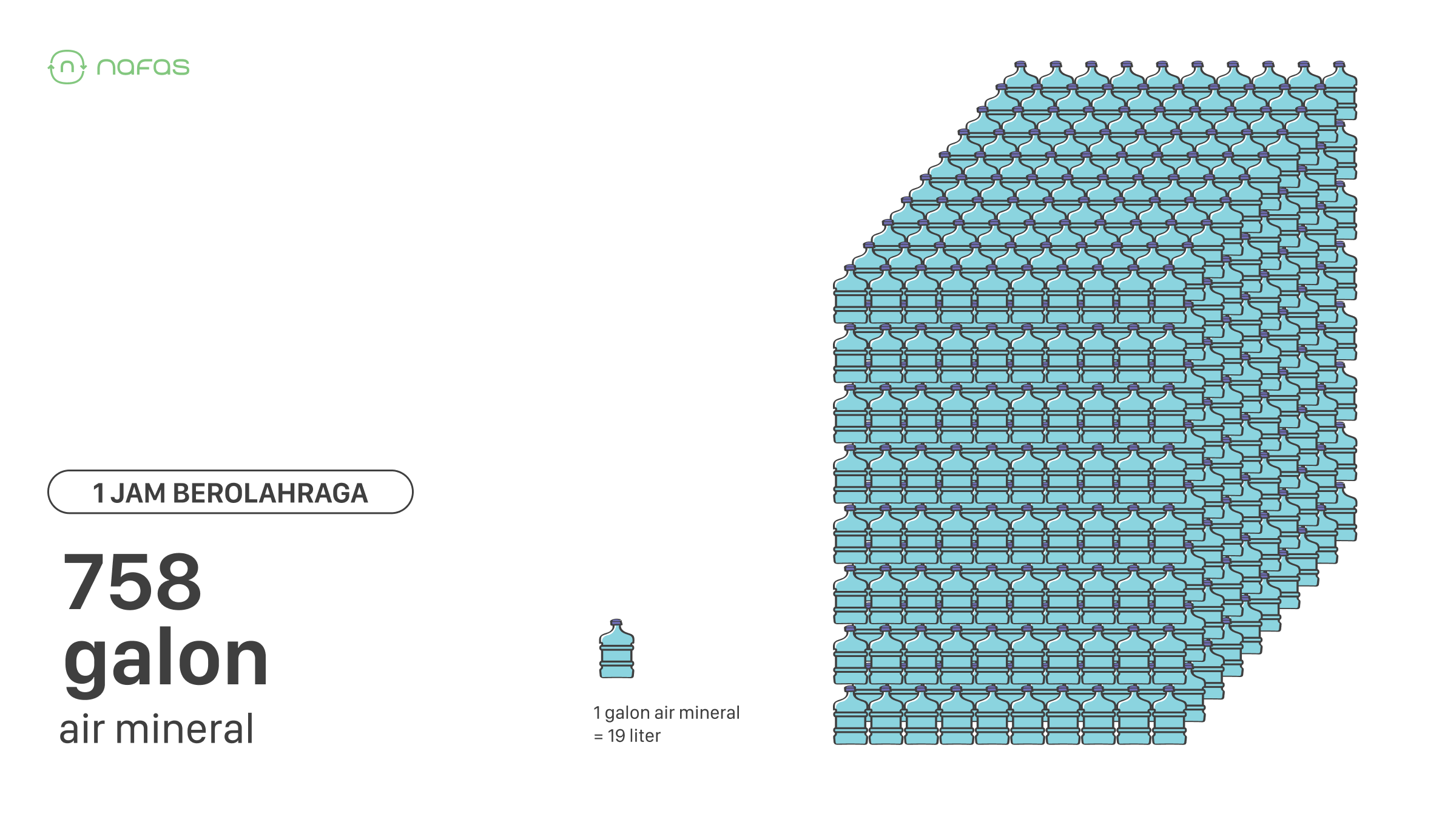
Aside from that, we inhale more air through the mouth when exercising, bypassing the nasal filters that normally remove large particles and soluble vapors. Higher airflow velocity causes pollutants to be carried deeper into the respiratory system.
Furthermore, pulmonary diffusion capacity has been shown to increase with exercise, implying that pollutant gas diffusion increases with exercise.
Many people prefer to exercise in the morning, which tends to have poor air quality
Sometimes, choosing the best time to exercise can be hard for some of us. Many people prefer to exercise first thing in the morning because the air is cleaner and there are fewer vehicle emissions. Along with that, exercise on an empty stomach can increase postprandial metabolism, allowing you to burn up to 20% more body fat.
However, data show that PM2.5 concentrations are highest between early morning and early morning. This is due to the temperature inversion factor, which creates a 'dome' in the atmosphere, preventing pollutants from dispersing properly. So, will exercising in the midst of poor air quality harm our health?
A recent study from Seoul National University that involves the health of people aged 20-35 years over 10 years states that people who exercised in PM2.5 levels over 26 µg/m3 had a 33% higher risk of heart disease than those who didn't exercise at all.
Let's see if the PM2.5 levels are higher than 26 µg/m3 between 5 - 10 AM in various regions.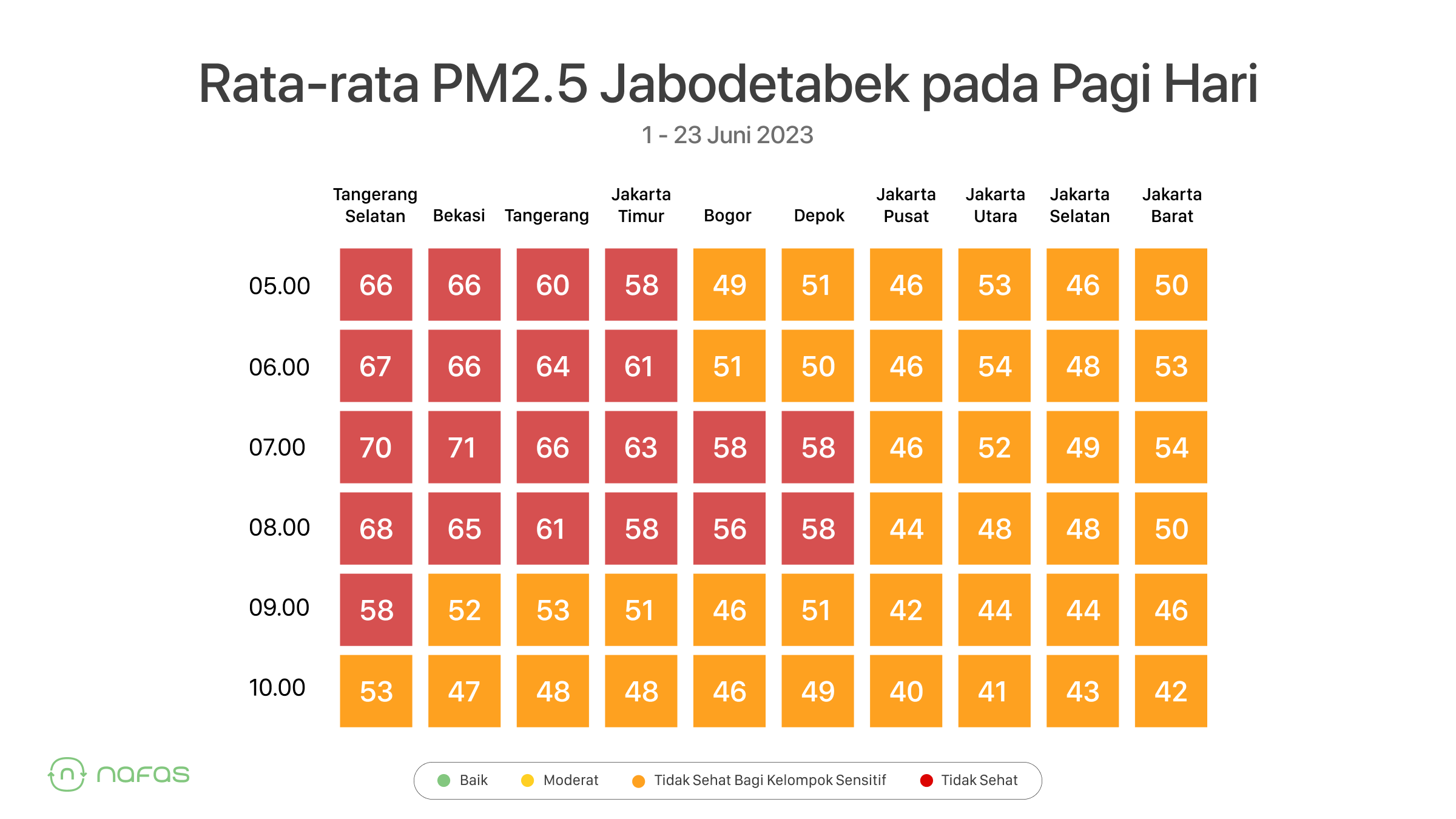
As early as 5 AM, the areas of South Tangerang, Bekasi, Tangerang, and East Jakarta already started to show that their air quality is unhealthy, with the highest concentrations in South Tangerang and Bekasi reaching 66 µg/m3, which is about 13 times higher than the WHO standard of 5 µg/m3. At 7 AM, the air quality in South Tangerang and Bekasi also reached 70 and 71 µg/m3. This is highly contradictory to the assumption that many people have about the air quality in the morning.
Certainly, residents are now starting to wonder when is the right time to exercise? During the day, afternoon, or evening? Based on data from breath sensors in South Tangerang, Bekasi, Tangerang, East Jakarta, Bogor, Depok, Central Jakarta, North Jakarta, South Jakarta, and West Jakarta, it turns out that from 12 AM to 11 PM, the air quality in the Jakarta metropolitan area (Jabodetabek) is dominated by orange and red colors, indicating that the air quality is unhealthy.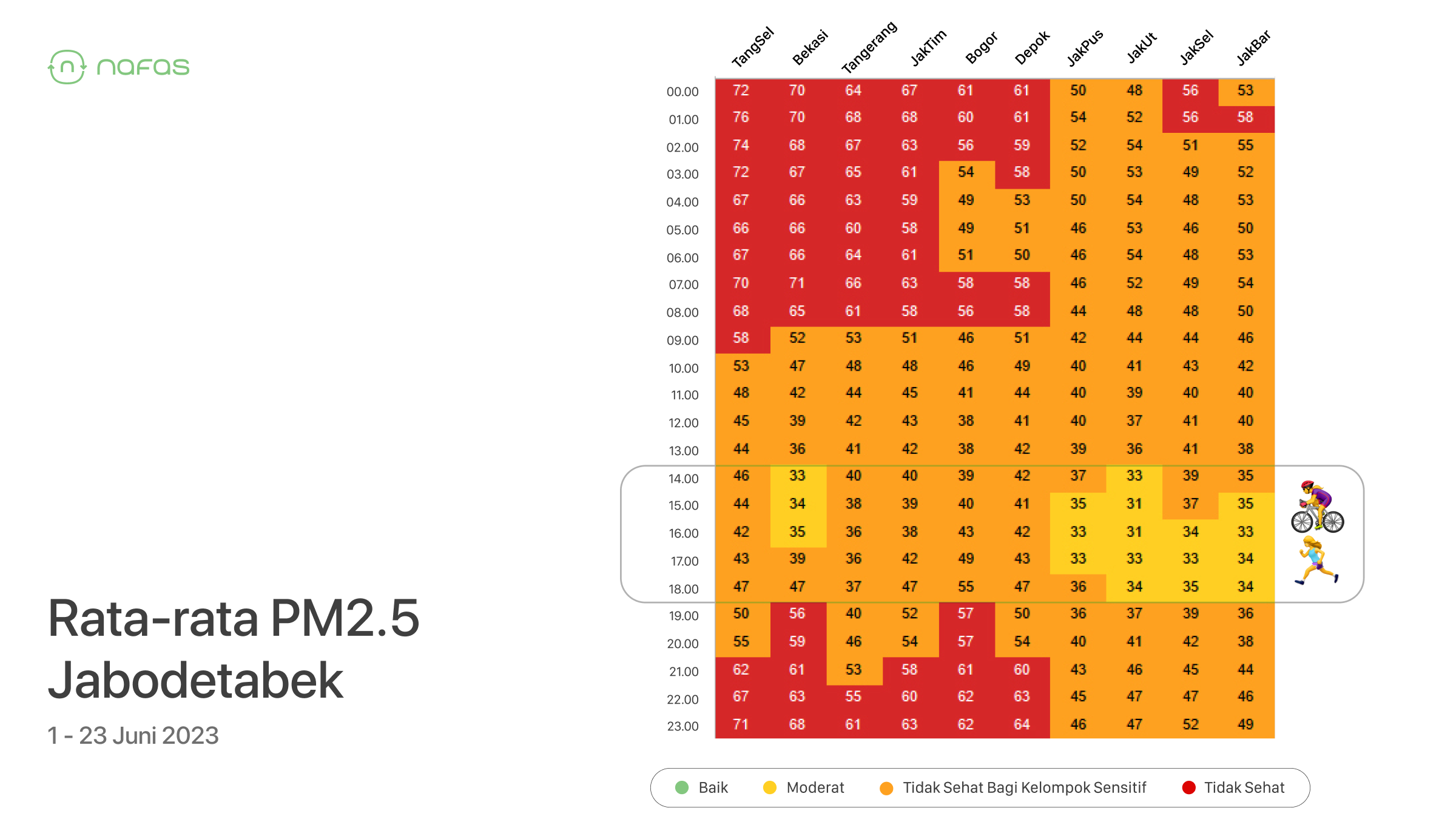
However, based on the above data, we can conclude that the time that is relatively "safe" for exercising is from 2 PM to 6 PM, but it is still advisable to keep the duration short to reduce exposure to pollution, dear residents!
Critical events and break-even points of air pollution levels
When discussing exercise and air pollution, there is always a balance between benefits and risks. The key is to limit the duration of your exercise within a certain range.
There is a tipping point where more exercise does not mean more health benefits. If you push beyond this point, you reach the break-even point. This is when the risk of air pollution offsets the benefits of exercise.
If you exceed the break-even point, additional exercise will actually be worse compared to not exercising in such conditions.
Let's take a look at the numbers!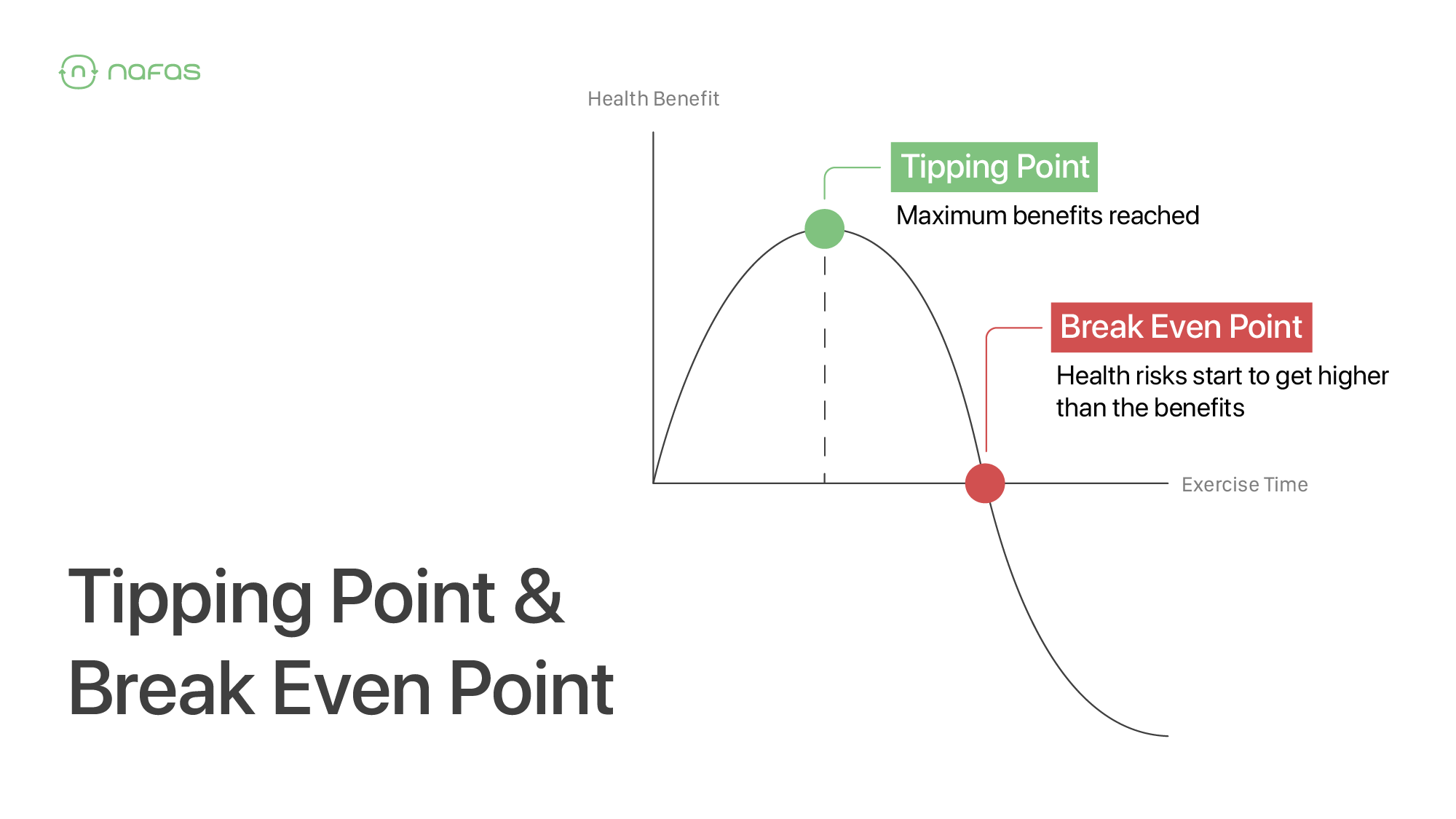
At a PM2.5 level of 50 µg/m3, there are no further health benefits after 75 minutes. At 100 µg/m3, that number decreases to 30 minutes. At 165 µg/m3, the break-even and critical points are 30 minutes. This is a level that we often see in Indonesia.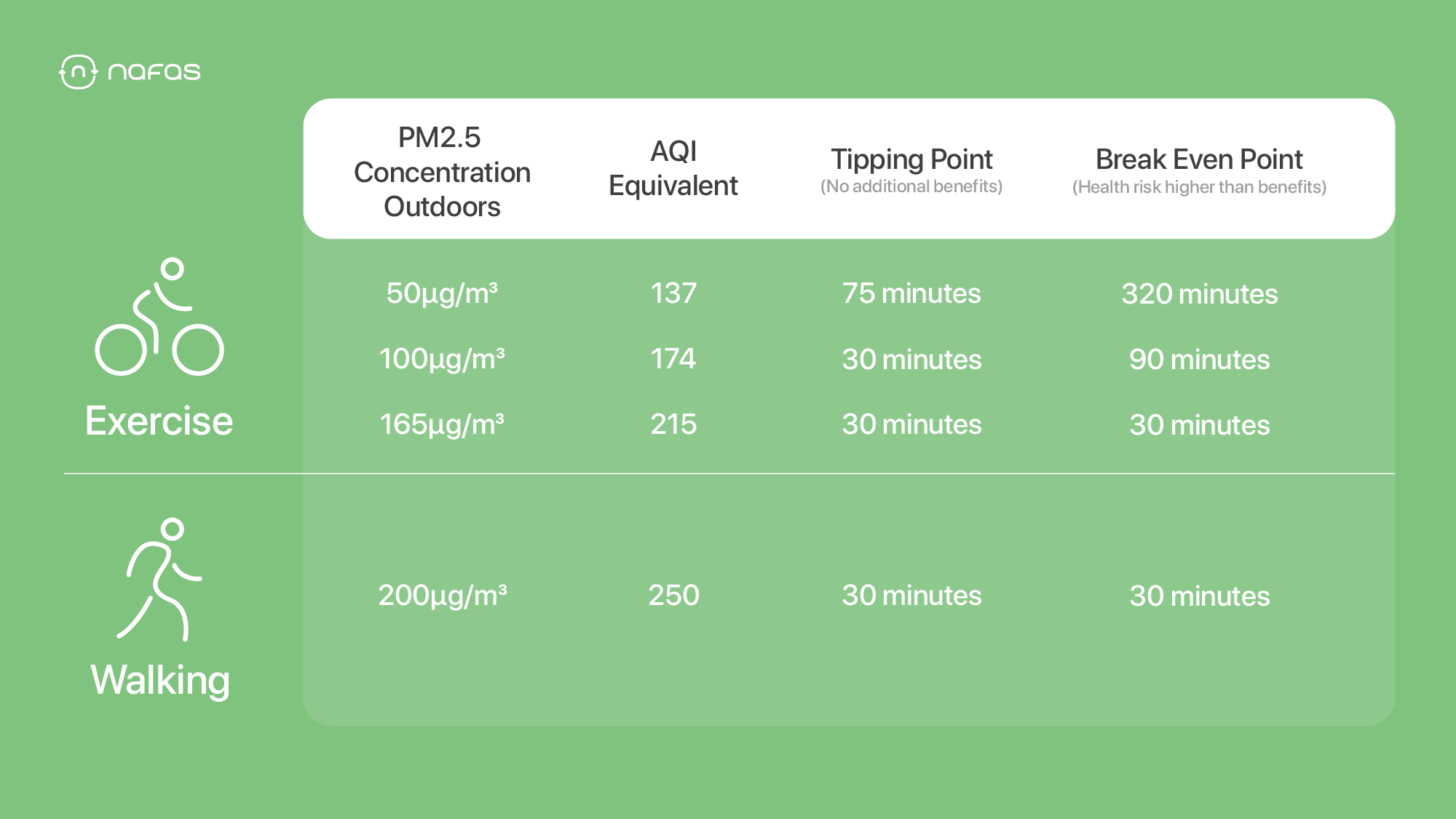
What can you do? 🤔
As discussed earlier, exercise provides real health benefits when done carefully. If the air pollution is high, the best scenario is to find another time when the air is less polluted.
However, the situation is rarely ideal. Finding time to exercise amidst your daily busy schedule is already quite difficult. Most likely, you can only exercise before and after working hours.
In this case, the key is to limit the duration of your exercise within a certain range depending on the PM2.5 levels in your area, especially for those in the Jabodetabek region. Here are some tips that residents can do to reduce exposure to air pollution while exercising:
- Regularly check the air quality using a breath application.
- Favor important locations for easier checking.
- Wear a mask when going outside (preferably a respirator mask like N95).
- During high pollution periods, shift activities such as exercise indoors.
- Look for gyms/studios for yoga and pilates that guarantee healthy indoor air quality at nafas.co.id/cleanairzone.
✅ Exercising is good, but it's even better when supported by healthy air quality, dear residents! 😉
References:
Gonzalez, J. T., Veasey, R. C., Rumbold, P. L., & Stevenson, E. J. (2013). Breakfast and exercise contingently affect postprandial metabolism and energy balance in physically active males. The British journal of nutrition, 110(4), 721–732. https://doi.org/10.1017/S0007114512005582.
Furlong, M. A., Alexander, G. E., Klimentidis, Y. C., & Raichlen, D. A. (2021). Association of Air Pollution and Physical Activity With Brain Volumes. Neurology, 10.1212/WNL.0000000000013031. https://doi.org/10.1212/wnl.0000000000013031.
Pacitto, A., Amato, F., Salmatonidis, A., Moreno, T., Alastuey, A., Reche, C., Buonanno, G., Benito, C., & Querol, X. (2019). Effectiveness of commercial face masks to reduce personal PM exposure. Science of the Total Environment, 650, 1582–1590. https://doi.org/10.1016/j.scitotenv.2018.09.109.